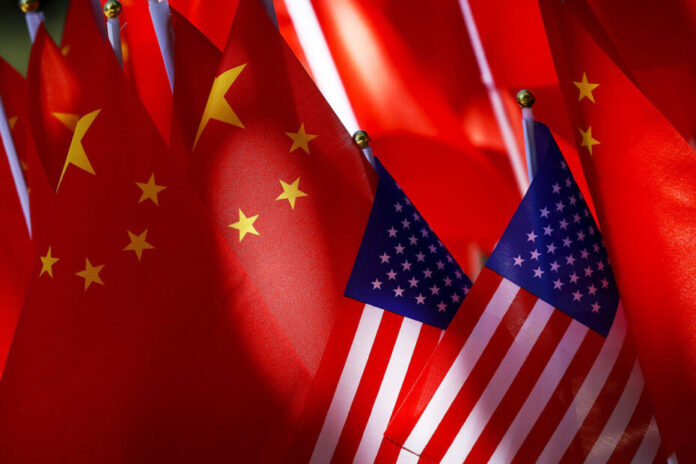Authors: Jo Inge Bekkevold & Øystein Tunsjø
Affiliation: Norwegian Institute for Defense Studies, Oslo, Norway
Organization/Publisher: China International Strategy Review
Date/Place: June 28, 2022/ China
Type of Literature: Journal Article
Number of Pages: 16
Link: https://doi.org/10.1007/s42533-022-00109-y
Keywords: China, US Strategy, Bipolarity, Geopolitics, Rimland
Brief:
International politics has entered a new era of bipolarity with the rise of China, which has challenged the hegemony of the United States. Currently, no other state has the combined power of the US and China. However, the authors of this article argue that the return of bipolarity and the competition between the US and China will not lead to a new Cold War-style containment. The geopolitical factors shaping the current great power competition are different from those during the Cold War. During the Cold War, the US employed four containment strategies to contain the Soviet Union: perimeter defense in the Eurasian rimlands, consolidated threat assessment with US allies, playing the “China card” against the Soviet Union, and economic containment efforts. However, these strategies are not compatible with containing China due to China’s geostrategic location. In this article, the authors review the US containment strategy during the Cold War and examine the incompatibility of those strategies against China in the current great power competition.
The authors present the heartland and rimland thesis by Mackinder and Spykman to explain why the current US-China bipolar system differs from the Cold War. During the Cold War, the US was able to contain the Soviet Union’s heartland by building alliances with the Eurasian rimlands. According to Spykman, securing the rimlands was essential due to their wealth, demographics, military-industrial potential, and most importantly, their easier access to the sea. Thus, Spykman argued that the United States should be present in the rimlands to contain the Soviet Union during the Cold War. However, with the rise of China, located in the rimlands, another geopolitical dynamic with different actors has emerged, presenting a unique challenge for the United States. In this regard, the authors argue that the current bipolar system is characterized by less intense balancing, a less intense arms race, and less polarization, but it is also less stable and more prone to conflict.
The Truman administration conceptualized two balancing strategies in the early days of the Cold War: strongpoint defense and perimeter defense. Strongpoint defense involves building alliances only with the leading economic powers around the enemy, while perimeter defense involves committing to support all states in the enemy’s perimeter without distinction. During the Cold War, the US supported all of the Eurasian rimlands around the Soviet perimeter. However, it is impossible to implement perimeter defense against China in the current bipolar system. This is because China is located in the rimland and controls the East Asian mainlands. After the collapse of the Soviet Union, China was free from a significant land-based threat and enjoyed relatively safe neighbors. Beijing has capitalized on this situation by focusing its resources on building sea power. Therefore, the authors argue that China’s geostrategic location compels the US to implement only strongpoint defense by building alliances with economic powers such as India, Japan, and South Korea.
Furthermore, during the Cold War, the US was able to optimize a two-flank threat against the Soviet Union by pushing Russia from Europe and East Asia. However, China already controls the East Asian rimlands, meaning that China only has one flank to defend, across the transpacific region. This situation pushes the US to prioritize its transpacific flank, leaving Washington less focused on transatlantic affairs. At the same time, European allies are unlikely to support the US in containing China while they are busy with the Russian threat and economically tied to China.
During the Cold War, Washington was able to play the “China card” against the Soviet Union. This was possible due to the fact that China and the Soviet Union were enemies on the brink of war, as demonstrated by the 1969 Sino-Soviet border conflict and Nixon’s visit to Beijing. However, the opportunity for the US to play the “Russia card” against China is difficult, if not impossible, due to several reasons. First, the Ukrainian conflict has compelled the US to side with European blocs against Russia. Second, Moscow and Beijing are in a very different relationship than they were 50 years ago, and in fact, they currently enjoy a closer relationship than at any time in history. Beijing’s focus on maritime power in the Indo-Pacific region shows that China is more concerned with the transatlantic flank and enjoys a safe neighbor in Russia. Similarly, Russia is more concerned with Europe than with considering China as a threat. The authors suggest that a shift in US-Russia relations against China is unlikely, unless Beijing turns its assertiveness towards Moscow.
The international economic order during the Cold War was characterized by a highly polarized two-bloc economic order, but this is not the case in the current bipolar order. Again, China’s possession of rimland power makes it different in these two scenarios. First, China’s rimland position has helped it expand global trade and interdependence with global actors, slowing down the polarization of the economic order. China has been successful in establishing a large network of economic interdependence overseas, not only through land-based trade, but also through its strong presence in sea-based trade routes. Second, China’s attachment to the European economy represents a one-flank challenge for Beijing. Since European countries are deeply connected to China in economic terms, it is difficult for them to decouple from the Chinese economy and support US economic containment against Beijing. Additionally, the effects of rapid globalization will prevent the polarization of the international economic order.
In conclusion, it is the geopolitics that differentiate the bipolar system of the Cold War and the US-China rivalry. While it appears that high polarization is unlikely to occur in the current bipolar system, the rivalry between the US and China may be more prone to conflict and more unstable.
By: Salman Nugraha, CIGA Research Intern




